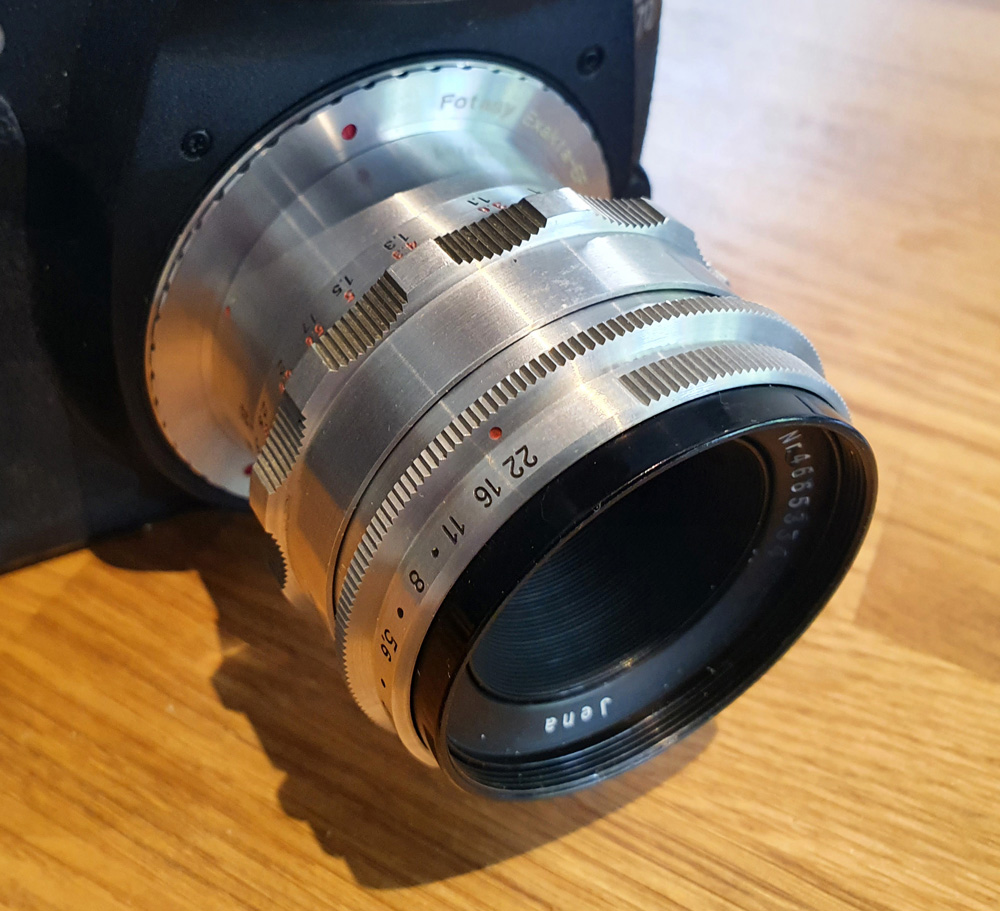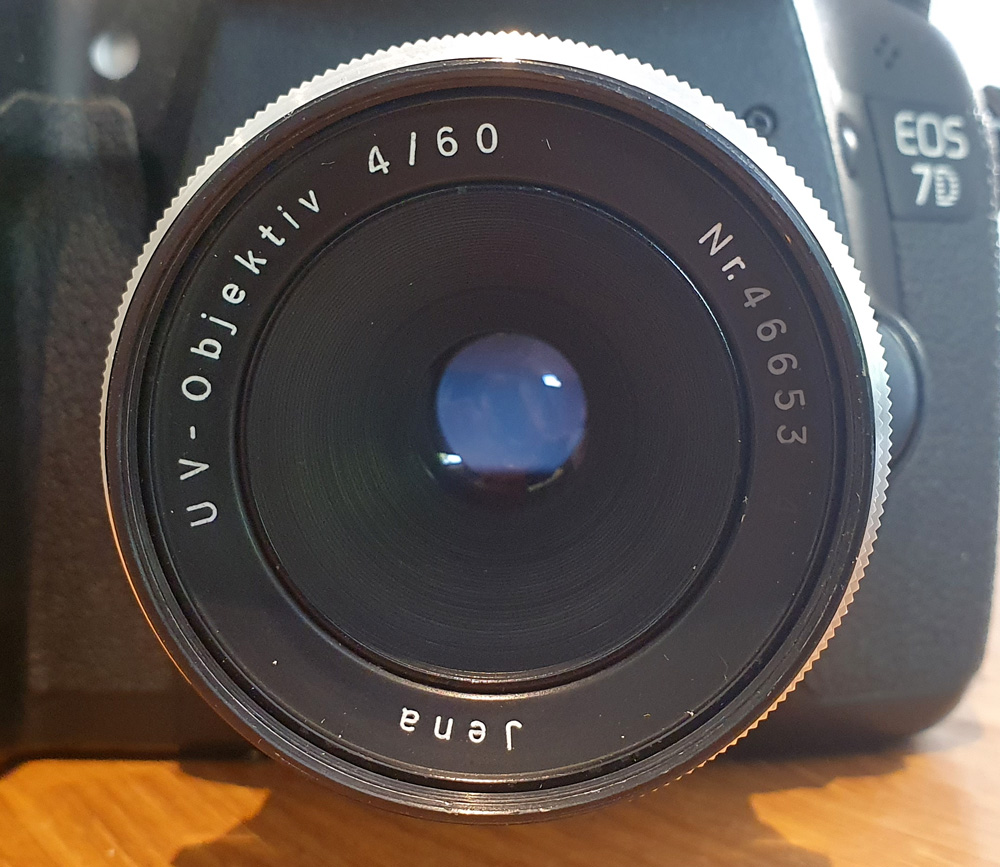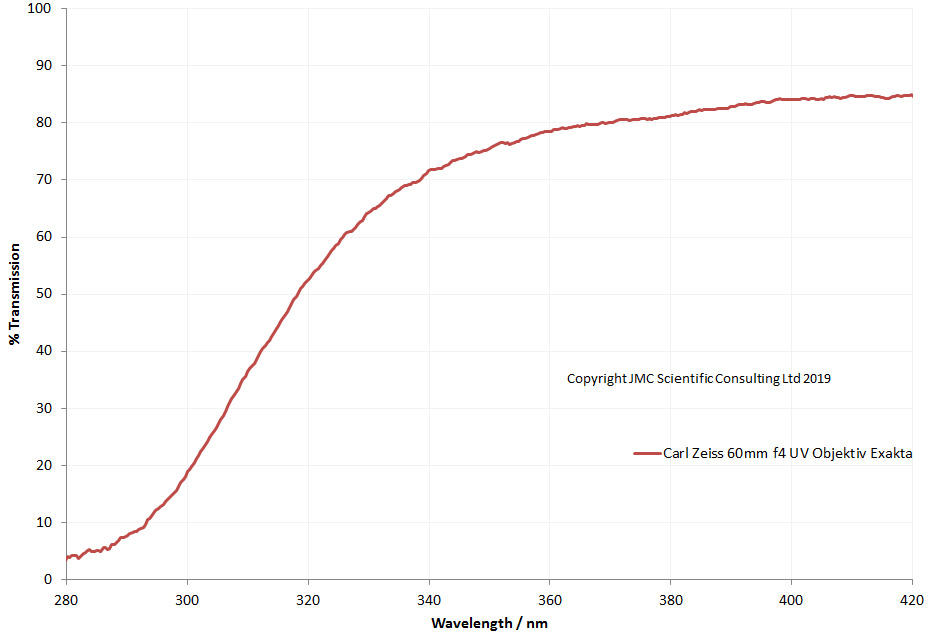Choice of lens has a huge impact on the nature of your final image. Some lenses are so clinically sharp you can cut yourself on the details in your shot. Others have more ‘character’. Here’s a fun and unusual lens, which falls into the second category, although I suspect under certain circumstances can yield some very usable images. It’s the 60mm f4 Zeiss UV-Objektiv in Exakta mount. Pictures of the lens below, mounted on to my UV converted Canon Eos 7D camera.


The lens is a simple triplet construction, and while it has pretty good UV transmission, it does not go as deep into the UV as the 105mm UV Nikkor Or 85mm Asahi Ultra Achromatic Takumar. I measured the transmission spectrum between 280nm and 420nm and got the following curve.

This lens is a simple construction – 3 element, 3 groups – and suffers quite horrendously from focus shift as the wavelength changes. To test it out, I got an Eos to Exakta adapter so I could mount it on my UV converted Eos 7D, and took a picture of some Buttercups in the garden, which is shown below.

Once white balanced correctly, the Buttercups show strong UV characteristic of the black centers and yellow petals, but the image is definitely a little soft. The UV filter in my modified Eos 7D lets through quite a broad range of UV wavelengths, so I get the feeling using a narrower band pass filter, and on a camera which has live view focusing, would improve the image.
There are some truly fascinating historical lenses, either quirky designs, or amazing engineering (or more often, both) which can be adapted to digital imaging. If you want to know more about this or any of my other work, I can be reached through my Contact page. Thanks for reading.
